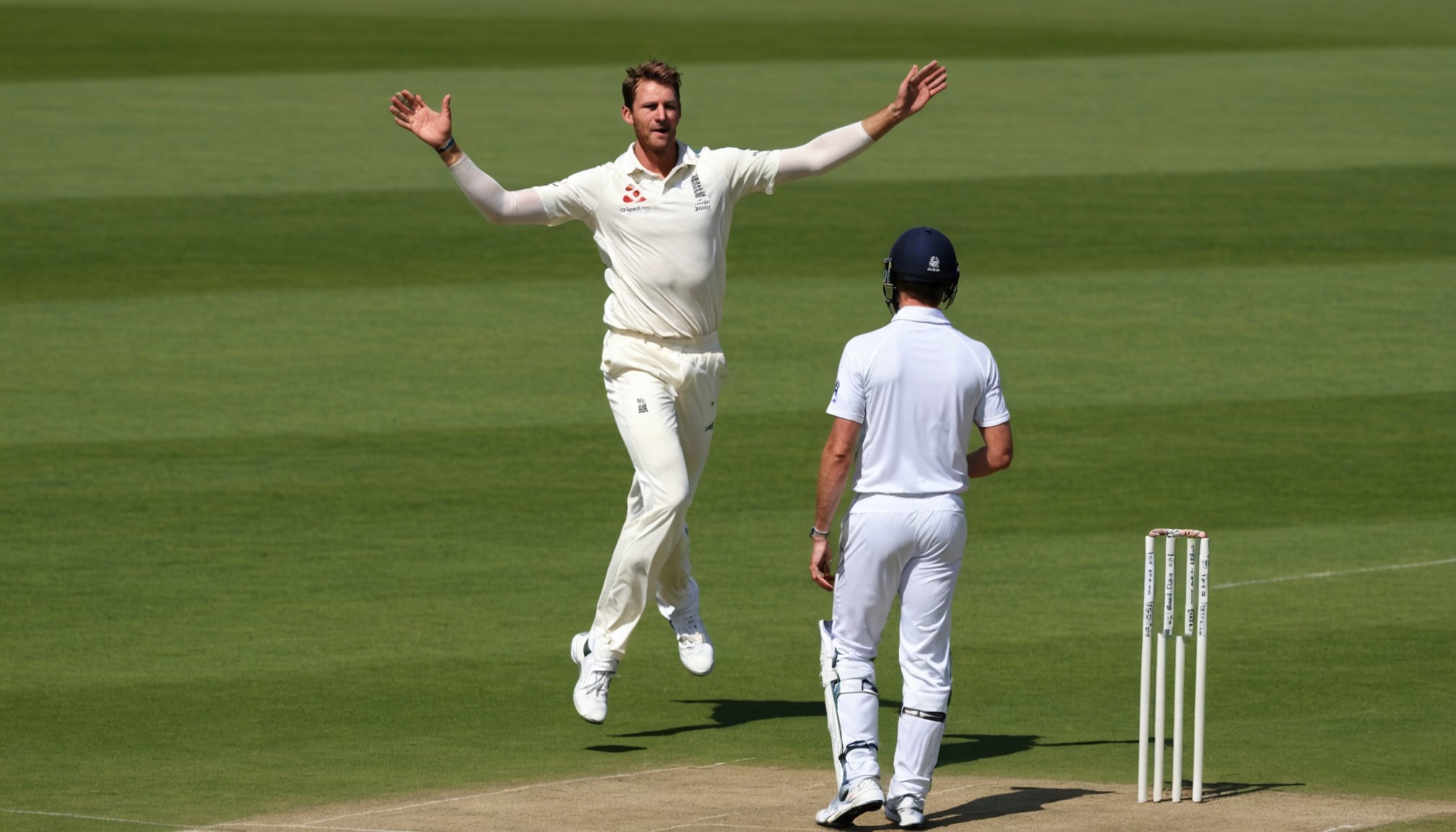Understanding Biomechanics in Fast Bowling
Biomechanics plays a crucial role in fast bowling techniques, impacting both performance and injury prevention. In cricket coaching, understanding these biomechanical principles allows coaches to refine athletes’ techniques efficiently.
Key biomechanical factors that influence bowling velocity start with the bowler’s run-up. The momentum generated during this phase is critical, as it sets the stage for a powerful delivery. As the bowler transitions from the run-up to the delivery stride, the coordination of limb movements becomes essential. Proper alignment of the body and optimal timing ensure maximum energy transfer.
Additional reading : Unlocking performance potential: the ultimate technology blueprint for uk sports teams
Moreover, the shoulder and hip axes are vital in transmitting rotational forces. A smooth, synchronized rotation between these axes enhances speed while maintaining control. This dynamic interaction emphasizes the importance of precise body mechanics, reducing unnecessary strain and risk of injury.
Coaches focusing on cricket coaching should integrate biomechanical assessments into training programs. Using video analysis or motion capture technology, they can analyze and correct any mechanical flaws in a bowler’s technique. This not only boosts performance but also aids in injury prevention by identifying and rectifying inefficient movement patterns.
Topic to read : Mastering the ring: the power of video analysis for uk boxing coaches to elevate skills and strategies
A deep dive into biomechanics equips bowlers with sustainable techniques and a competitive edge, aligning their physical abilities with the demands of fast bowling.
Techniques to Enhance Bowling Velocity
In fast bowling, understanding the kinetic chain is essential for improving bowling velocity. This involves comprehensively analyzing how different body movements work in tandem to generate speed. Each segment of the body, from the legs to the core and arm, contributes to the seamless transfer of energy, maximizing performance improvement.
Training techniques for enhancing bowling velocity often include specific drills that focus on building strength, flexibility, and coordination. Strength training, for example, enhances the muscular power necessary for explosive deliveries. Flexibility exercises then ensure that the body can extend fully, maximizing reach and speed. Meanwhile, coordination drills, such as weighted ball exercises, aid in synchronizing movements, ensuring precision and consistency.
Incorporating technology into training regimens further elevates performance. Tools like motion capture systems and speed radars provide detailed feedback, enabling bowlers to fine-tune their techniques. Such technological aids quantify progress, helping to identify areas for improvement, ultimately leading to significant gains in bowling velocity.
Embracing these focused approaches and leveraging innovative technology enables bowlers to refine their skill set, resulting in discernible advancements in speed and efficiency on the field.
Injury Prevention Strategies in Fast Bowling
Fast bowlers often face a variety of injuries due to the demanding nature of the sport. Common injuries stem from biomechanical causes, such as repetitive stress on the body. Stress fractures in the lower back, shoulder strains, and knee injuries frequently occur, resulting from the intense physical demands placed on fast bowlers.
Fitness training plays a vital role in minimizing these risks. By focusing on strength and conditioning, bowlers can enhance their body’s resilience to the stresses imposed during play. Exercises aimed at core stability, joint flexibility, and muscular endurance contribute significantly to injury prevention.
Coaches hold a crucial responsibility in monitoring player workloads. Implementing structured training schedules and tracking player fatigue levels are essential strategies. This involves balancing bowling volumes with adequate rest periods to prevent overuse injuries. Coaches should also tailor training plans to individual players, considering their unique capabilities and injury histories.
By employing these injury prevention strategies, the likelihood of fast bowlers suffering from debilitating injuries can be greatly reduced. This holistic approach ensures players maintain peak performance levels while safeguarding their long-term health.
Case Studies of Successful Fast Bowlers
Examining the journeys of successful fast bowlers offers valuable insights into the making of a champion. These athletes have not only achieved peak performance levels but have also pushed the boundaries of what fast bowling entails.
Profiles of Notable Fast Bowlers
Renowned fast bowlers have emerged from various cricketing nations, each bringing their unique flair and skillset. Players like Glenn McGrath and Wasim Akram have become iconic in the cricket world, known for their precise deliveries and effective wicket-taking techniques. Understanding their backgrounds and career milestones sheds light on what it takes to excel in fast bowling.
Techniques They Employed
Fast bowlers rely heavily on a blend of biomechanics and refined techniques. Speed and accuracy are achieved through rigorous training focused on specific skillsets like seam positioning and wrist action. These bowler legends mastered unique techniques that suited their physical attributes, often innovating to deliver unexpected outcomes on the field. Biomechanical insights have aided in refining their delivery styles, reducing injury risks while enhancing effectiveness.
Lessons Learned from Their Experience
From the careers of these fast bowlers, we learn the significance of coaching and support systems. Efficient training regimes were pivotal in guiding their careers. Aspiring fast bowlers can benefit from understanding how tailored training plans, injury prevention measures, and adaptive techniques lead to sustained success in this demanding sport.
Practical Drills for Coaches and Players
Training drills are essential for enhancing both technique and fitness in cricket. A primary focus should be on exercises that promote power generation. For batsmen, practicing with dynamic resistance bands or weighted bats can significantly enhance swing power. Bowlers can benefit from plyometric exercises like box jumps to boost delivery speed.
Maintaining proper posture and balance is crucial for bowling. Drills like balance beam exercises help players maintain a steady stance during their run-up and delivery. Practicing deliveries while holding weights can also aid in building core strength and stability.
For coaches, implementing these drills effectively is critical. Start by ensuring drills are tailored to individual needs and skill levels. Progress from simple to complex exercises to continuously challenge players. Monitoring feedback and performance is also imperative to adjust techniques for optimal improvement.
When utilizing coaching resources, incorporate video analysis for visual feedback. This aids in correcting form and addressing issues players might not notice themselves. By integrating these practices, coaches can foster a comprehensive training environment that promotes skill development and teamwork. Coaches and players should consistently evaluate progress and stay adaptable in their approaches to achieve the best results.
Emerging Trends in Cricket Coaching
Cricket coaching is evolving, and innovation in training is essential to keep up. The impact of data analytics has been transformative, allowing coaches to make more informed decisions. Through real-time performance analysis, coaches can pinpoint players’ strengths and weaknesses precisely.
The adoption of virtual reality and simulation is another leap forward. It’s like having a digital coach by your side. Players can now simulate match scenarios, engaging in immersive environments that help hone their skills without the wear and tear of traditional practice sessions. This method is particularly beneficial for enhancing decision-making under pressure, a crucial aspect of the modern game.
Looking forward, fast bowling techniques are set to undergo significant innovation in UK cricket. Coaches are increasingly focused on biomechanical analysis and new training methodologies to develop speed and accuracy without compromising the player’s health. These emerging trends not only enhance coaching efficiency but also promise a future where tailored training programs are the norm. As these technologies become more accessible, cricket coaching trends are set for a revolution, providing players with personalized paths to success.
Resources and Tools for Coaches
In the realm of cricket coaching, coaching resources play a pivotal role in enhancing a coach’s ability to develop players effectively. Among the foremost resources are literature and research on biomechanics. These materials offer invaluable insights into the physical movements essential for cricket, enabling coaches to tailor training sessions that optimise player performance. Training tools, such as video analysis software, are revolutionising skill improvement. These tools provide coaches with the ability to dissect players’ techniques, identify areas of improvement, and monitor progress over time.
To stay updated with the latest coaching methodologies, many coaches turn to online courses and workshops. These platforms offer a wealth of knowledge on cricket education, providing both new and seasoned coaches with opportunities for professional development. Such courses often cover a wide range of topics, from fundamental coaching principles to advanced strategies, ensuring coaches remain at the forefront of the sport. Embracing these modern resources allows coaches not only to educate themselves but to also enhance the learning experience of the players they train, fostering an environment of ongoing growth and development.











